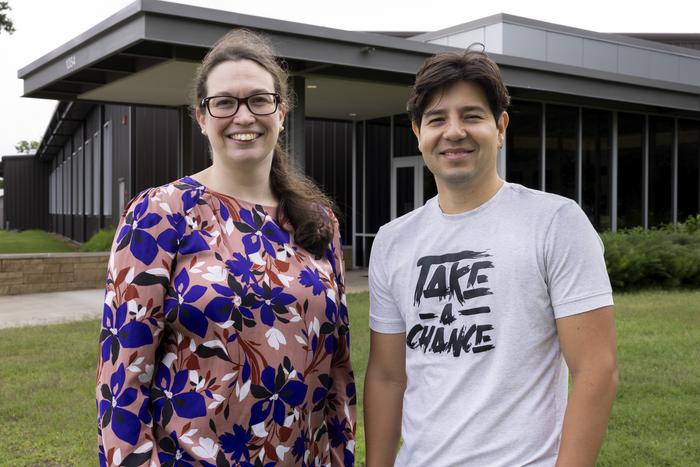
FAYETTEVILLE, Ark. — Researchers at the Arkansas Agricultural Experiment Station have made groundbreaking strides in assessing herbicide effectiveness by leveraging advanced artificial intelligence and hyperspectral sensors. This innovative approach enables the measurement of herbicide-induced stress in plants with a precision that surpasses human visual capabilities, thereby addressing persistent challenges in weed management and herbicide resistance.
In a recent publication in the journal Smart Agricultural Technology, the team provides a compelling proof-of-concept study demonstrating how a spectroradiometer, a hyperspectral sensor, can quantify herbicide efficacy. Traditional methods of evaluating the effectiveness of herbicides largely rely on visual assessments, which are inherently subjective and prone to human error. The research seeks to remedy these drawbacks by integrating machine learning algorithms with advanced sensing technology.
While standard cameras capture images based on three main visible light bands—red, green, and blue—hyperspectral sensors collect data across a much broader spectrum, encompassing wavelengths from 250 nanometers to 2,500 nanometers, including thermal infrared data. This extensive range allows researchers to delve deeper into the physiological responses of plants to herbicides, tracking subtle changes that would otherwise be missed by the naked eye.
.adsslot_S6vrJ2hEyj{width:728px !important;height:90px !important;}
@media(max-width:1199px){ .adsslot_S6vrJ2hEyj{width:468px !important;height:60px !important;}
}
@media(max-width:767px){ .adsslot_S6vrJ2hEyj{width:320px !important;height:50px !important;}
}
ADVERTISEMENT
The focus of this study was on common lambsquarters (Chenopodium album L.), a prevalent weed known for its resilience in various agricultural settings. Utilizing hyperspectral imaging, researchers evaluated how common lambsquarters react to glyphosate, one of the most widely used herbicides. Their findings revealed that even sub-lethal doses of glyphosate can enhance photosynthetic activity in these weeds, illustrating a counterintuitive aspect of herbicide application that could have significant implications for weed management strategies.
Aurelie Poncet, the study’s principal investigator and an assistant professor of precision agriculture at the University of Arkansas, noted that reliance on visual ratings for herbicide assessment can lead to variability based on the evaluator’s experience and subjective judgment. By developing automated systems to quantify the effects of herbicides, the researchers aim to reduce that variability and enhance the accuracy of herbicide effectiveness evaluations.
The team’s research effectively harnesses machine learning through the application of a random forest algorithm, which processes vast amounts of vegetation index data collected during the experiments. This method synthesizes input from numerous decision trees, resulting in a more reliable output that minimizes the chances of errors associated with human evaluation.
Achieving a margin of error that falls below 10 percent remains an ultimate goal for the researchers, as current methodologies yield a margin of error at approximately 12.1 percent. The precision brought about by combining hyperspectral sensing with machine learning holds immense potential for optimally managing herbicide applications, which is critical for preventing herbicide resistance—a pressing issue within modern agriculture.
As the researchers refine their hyperspectral sensing techniques, they foresee applications that extend beyond mere herbicide assessment. This technology could facilitate high-throughput categorization of weed responses and aid in screening for herbicide resistance across multiple weed species and application scenarios. In the face of ongoing environmental challenges and the increasing complexity of agricultural practices, the ability to automate and enhance evaluations of herbicide efficacy offers a pathway forward.
Professor Nilda Roma-Burgos, a co-author of the study, emphasizes the potential of this method to eliminate human judgment errors caused by fatigue, particularly in challenging field conditions. By relying on technology rather than human perception, the research provides farmers and scientists with a reliable tool for measuring herbicide effectiveness, leveling the playing field against herbicide resistance.
The study, supported by funding from the National Science Foundation and the USDA’s National Institute of Food and Agriculture, highlights not only the importance of interdisciplinary collaboration but also the necessity for continued research in quantifying plant responses to herbicides. As additional validation is needed for this innovative method across various weed species and environmental factors, the research team remains committed to exploring its practical applications.
As the landscape of agriculture evolves and the challenges of weed management become increasingly sophisticated, the integration of artificial intelligence and sensing technology may usher in a new era of precision agriculture. By bridging the gap between traditional pest management strategies and cutting-edge technology, researchers are poised to make a lasting impact on both agricultural productivity and environmental sustainability.
The ultimate goal of this research is to contribute to the broader understanding of herbicide interactions with various plants, paving the way for the development of more sustainable agricultural practices. As the team delves deeper into their findings, the scientific community and agricultural stakeholders alike await the next chapter of discoveries that could revolutionize the methods used for weed management on farms around the world.
In conclusion, the innovative application of hyperspectral sensing combined with machine learning not only enhances the potential to measure herbicide-induced stress with remarkable accuracy but also represents a significant leap toward more sustainable agricultural practices. As the research moves forward, it stands to offer invaluable insights that could redefine the approach to weed management and herbicide application in agriculture.
Subject of Research: Herbicide efficacy measurement using hyperspectral sensing and machine learning
Article Title: Hyperspectral indicators and characterization of glyphosate-induced stress in common lambsquarters (Chenopodium album L.)
News Publication Date: 14-Mar-2025
Web References: Smart Agricultural Technology
References: National Science Foundation, USDA’s National Institute of Food and Agriculture
Image Credits: Credit: U of A System Division of Agriculture photo
Keywords
Herbicides, Machine learning, Artificial intelligence, Light sensors, Weeds
Tags: advancements in weed scienceartificial intelligence in weed managementassessing herbicide-induced plant stressherbicide effectiveness measurementhyperspectral sensors in agricultureinnovative weed management strategiesmachine learning for plant healthmonitoring physiological responses in plantsovercoming herbicide resistance challengesprecision agriculture technologiessmart agricultural technology advancementsspectral data analysis in agriculture





